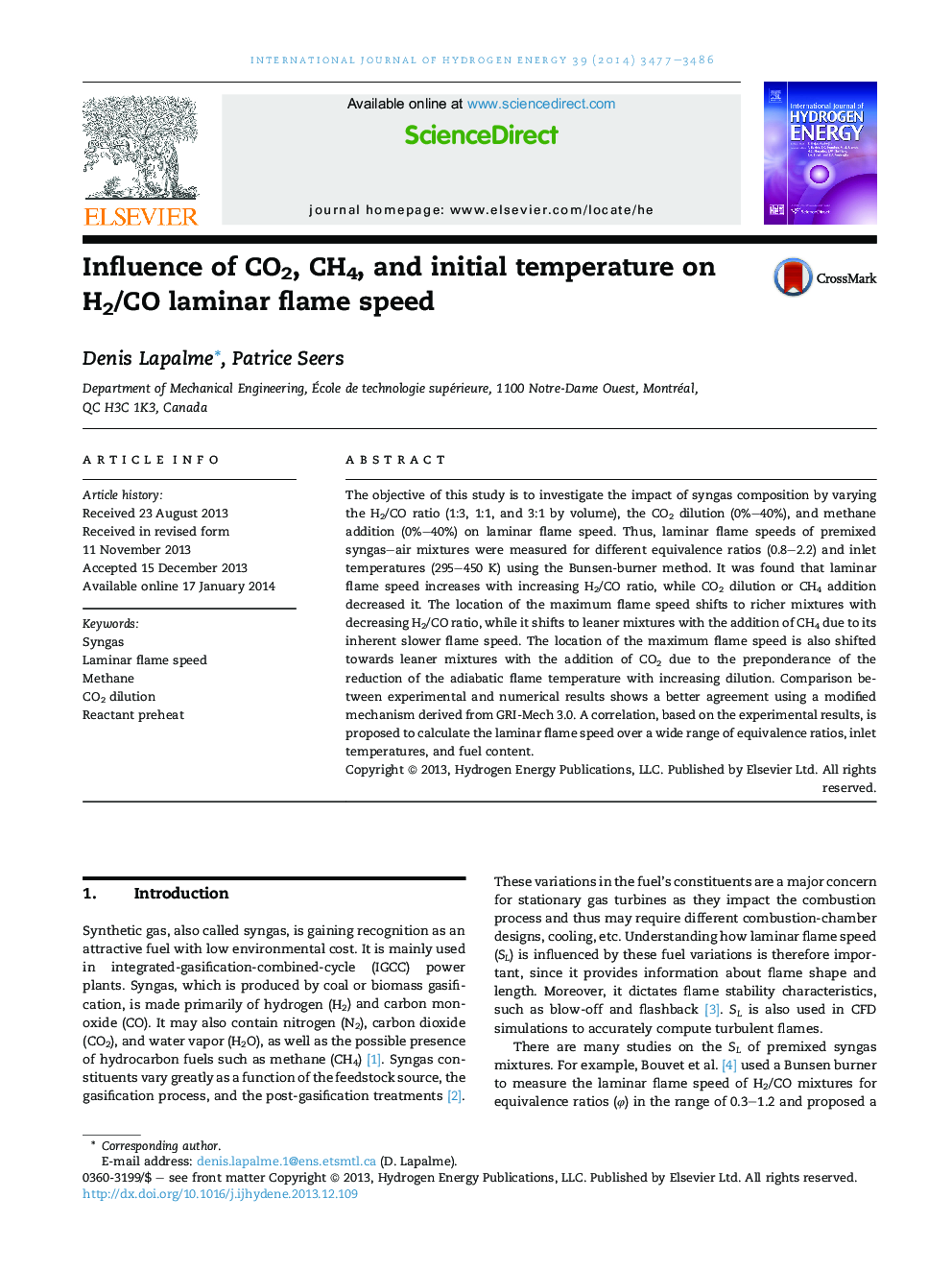| Article ID | Journal | Published Year | Pages | File Type |
|---|---|---|---|---|
| 1270653 | International Journal of Hydrogen Energy | 2014 | 10 Pages |
•Flame speeds of H2/CO/CO2/CH4 were measured using a Bunsen burner.•We examine the influence of H2/CO ratio, CO2 dilution and CH4 addition.•The maximum flame speed shift is mostly due to thermal effects.•Predictions are in better agreement when using a mechanism derived from GRI Mech 3.0.•A proposed correlation captures the impact of fuel content, equivalence ratio and temperature.
The objective of this study is to investigate the impact of syngas composition by varying the H2/CO ratio (1:3, 1:1, and 3:1 by volume), the CO2 dilution (0%–40%), and methane addition (0%–40%) on laminar flame speed. Thus, laminar flame speeds of premixed syngas–air mixtures were measured for different equivalence ratios (0.8–2.2) and inlet temperatures (295–450 K) using the Bunsen-burner method. It was found that laminar flame speed increases with increasing H2/CO ratio, while CO2 dilution or CH4 addition decreased it. The location of the maximum flame speed shifts to richer mixtures with decreasing H2/CO ratio, while it shifts to leaner mixtures with the addition of CH4 due to its inherent slower flame speed. The location of the maximum flame speed is also shifted towards leaner mixtures with the addition of CO2 due to the preponderance of the reduction of the adiabatic flame temperature with increasing dilution. Comparison between experimental and numerical results shows a better agreement using a modified mechanism derived from GRI-Mech 3.0. A correlation, based on the experimental results, is proposed to calculate the laminar flame speed over a wide range of equivalence ratios, inlet temperatures, and fuel content.
